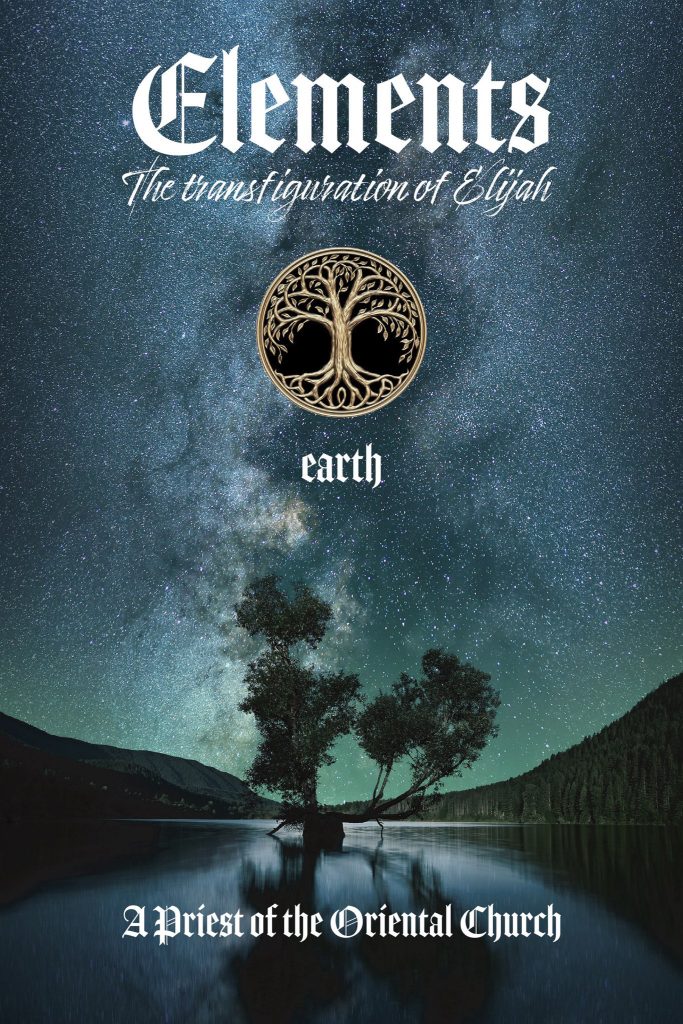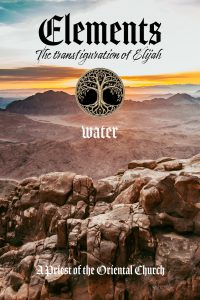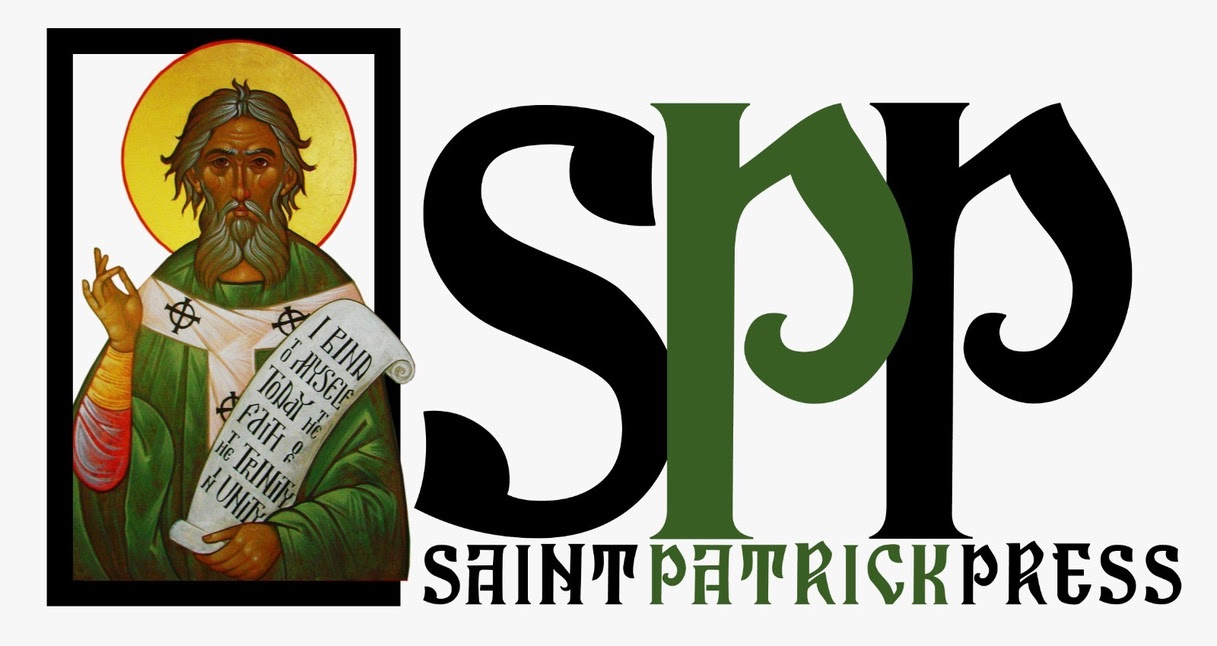Elements is the latest novel by Saint Patrick Press. It is an epic story of how one becomes a saint through stages of self-emptying Love.
One thing I have desired of the Lord, that I will seek. That I may dwell in the house of the Lord all the days of my life, to behold the beauty of the Lord, and to inquire in His temple
Psalm 27:4

Reading Rushdie in a Doctor’s Office

I remember the first time I read Salman Rushdie. It was a short story featured in the New Yorker Magazine, entitled The Firebird’s Nest‘. It was summer, June 1997 to be precise, and I was in the waiting room of a doctor’s office–for what malady, I don’t remember …
Sitting in that doctor’s office with the magazine rolled up in my hand, my eyes dancing through type, Rushdie painted a world for me that was exotic, piquant; a world whose tastes seemed to somehow whet my mouth …
It was the first time I had ever heard of the word ‘phantasmagoric’.
After reading the short story in the New Yorker, I had to read more …
I started with the book Shame, and then struggled my way through the erudition and ‘culture shock’ of The Satanic Verses. I have a copy of Midnight’s Children somewhere in my library, but have yet to read it even though I’m eager to.
What’s wonderful and inviting about Rushdie is he creates a world born out of his childhood in India and adult life in the U.K. The collision of those two worlds provides a rich creative tension that makes for delightful reading. There are characters who emerge from the pages with layers of cultural and religious experiences that to the western reader seem mysterious yet wrought with meaning. You want to know more about this world, yet your own cultural presuppositions and experiences keep you somewhat at arms’ length which jacks up the intrigue even more.
Facing the Elements

The reason why I mention Rushdie here in a post about Elements is that I had a similar experience while reading the latter as I did while in that doctors office pouring over the The Firebird’s Nest. Through Elements, the author paints a beautiful world–the world of a Coptic boy growing up as a first generation Canadian, playing Atari and running through the forest. This boy, Elijah, grows up in a family of Egyptian emigres who work and struggle to maintain their Coptic heritage and traditions amidst a western culture that is deeply secular and materialistic.
The most important part of their heritage is the Coptic Church herself, particularly the divine liturgy through which Christ Himself offers His Body and Blood. You can smell the incense of Matins wafting through the pages, you can hear the chanting of the liturgy, you can taste the stuffed olive leaves served afterwards while sitting in on the tantes’ chatter; you can feel St. Mary’s smile and gentle hand.
Elijah however, while loving his family and his culture, has different plans–to become a successful lawyer, get a big job on Bay Street, and drive a Ferrari. Through this ambition, Elijah falls further away from his family, and his church while overall attaining his goals–with the exception, pro tempore, of the Ferrari …
But his plans go awry when he meets the woman of his dreams. Her name is Esther. She is beautiful–but it’s her spirit, her love for God, her passionate following of Christ and the light of His Love on her face, that attracts Elijah. And though Elijah has given up on God and intentionally gone his own way, he is called back to a life of faith through his pursuit of Esther.
But while Esther and Elijah grow in love, there is a deeper Way that Elijah is called to; the Way of holiness, the Way of becoming a saint–the way of the Elements: to become earth, water, fire, and wind.
Without going into too much detail here, through an epic journey Elijah comes to the fulfillment of each element. The journey takes Elijah from the University of Ottawa to the miasmal gales of a Costa Rican hotel room; from the cacophonous streets of Egypt to the phantasmagoria (I had to get that word in!) of a desert cave where monks dwell and travel blithely through time and space; from a pastoral farm in rural Ontario to a native reserve a short plane ride from Thunder Bay; from a Don Jail cell to a bustling Ottawa bakery … Each time an element is reached, Elijah becomes more and more himself by emptying himself and giving more of his life to God by giving his life to others.
A Kind of Literary Hagiography

But it is precisely as a kind of fictional hagiography that we leave Rushdie behind and embrace a key ‘element’ of this book: that the story of Elijah is the story of all of us. As Father Anthony Mourad said so succinctly in his Amazon review, the story of Elijah is an icon that points to what is achievable by all of us when we truly abandon ourselves to the Love and calling of Jesus Christ. Thus Elijah is not merely a character in a novel; and not even a character that, like all great literature, is a kind of portrait of a certain part of ourselves. It goes beyond to embody who we all can become in our own unique way–becoming like Christ and therefore saints.
Elements, in addition to being a wonderful page-turning story, is filled with teaching from scripture–indeed, chapter 1 begins as Genesis and runs all through the books of the Bible to the final chapter as Revelation–the desert fathers, and the Orthodox Christian tradition. I remember while reading it the number of times I would have an insight into my life the following day–when a particular teaching would grip me, and I would see the world and my relationship to Christ and those around me differently. After reading the night before, the following day would become a time when I tried to put something I learned to practice.
And there are myriad wonderful characters in the book; characters who for the most part seem to come alive when they are touched by Elijah’s warmth and beauty and love. There are students and monks, priests and native chiefs, prostitutes, pimps, and pushers, and so many everyday saints.
Back to the comparison with Rushdie …
In the same way that Rushdie’s books present Indian culture while not marginalizing western readers, so with Elements while there are aspects that are strongly Coptic, the bulk of the book is deal with contemporary and ‘western’ issues which thus can be understood by anyone.
May there be many more …
Saint Patrick Press is honoured to publish Elements. Given that this is the debut book of the Priest of the Oriental Church, we look forward to many more–ye many many more!–books from this exciting author.
Meantime, you won’t want to miss out on this book. Order your copies today!
If you have already read it, feel free to comment below–we’d love to hear from you.

6 Responses
Is elements a real story?
Thank you JS for responding to this post with a query.
Is Elements real?
Well, if what you mean by “real” is that ‘Elements’ is a book that one can order from Amazon, put on one’s shelf, read before bed etc, and a book that has a particular plot line of beginning, middle, and end, then I would say yes, it is a real story (as opposed to a ‘fake’ story, but I’m not sure what that would mean … or maybe I do …).
But that doesn’t seem to be the nature of your question …
You’re probably wanting to know what people who read or listen to stories want to know, and that is whether the stuff of the plot line, the stuff that makes up the story, is fact or fiction, right?
But that’s a difficult question too, for in any story how is one to verify whether a particular detail of something found in a given book corresponds to the actual event? Sit around with a group of men who have been fishing and you’ll see just how difficult verifying fact and fiction can be.
And God forbid we end things with the often quoted statement of the great poet T.S. Eliot–that all artists are liars!
But that also doesn’t seem to be the real nature of your question either …
I suppose the best answer I can proffer here is yes, ‘Elements’ is a real story …
Why?
Because it tells the Truth–or presents the Truth for Who He Is.
And ‘Elements’ presents the Truth in a way that can lead one to encounter Him. For while all stories have elements of fact and fiction to them–by virtue of us being fallible human beings with often flawed perspectives on reality–this particular story is about Jesus Christ, the Logos Himself and how one can be so radically transformed by Christ ‘as Love’ that one can go on to do things and touch other lives in ways that would be utterly inconceivable without encountering that Love in the first place.
The story is real because its Subject is real, namely Jesus Christ as I’ve stated above, and the object of the story is real, namely the reader or in this case you.
And how the story becomes even more real–or really real–is how it inspires you, the reader, to encounter the Love of Jesus Christ and spread that Love to everyone around you, much like Elijah does in ‘Elements’.
Make sense?
If you are not entirely satisfied with my answer, feel free to leave another post.
God bless,
Jeff
Publisher
Is the author priest
Yes: the author is a priest of the Oriental Church.
Greetings Jeff,
I don’t know how I’m about to put my words actually, but I will try my best to let my heart find words for what has filled her so much.
First of all things I might say, My God bless you, your family, your surroundings!
I know God has used those hands and the mind with the Heart that thought of all those Lost Souls in this world.
So since I know I will never be able to say my Gratitude enough, let me request what my heart really desired. If only possible and would be good for you too.
I need this Blessing for the Souls in My Country as well (not USA, which I’m currently living in).
God’s will, but do you think Elements can reach them out in that country (in Africa-I felt like God was telling me through the book as well when you mention a Saint from the specific country)
Please let me know if I can be part of this Blessing, i would be more than Happy Ms.Jeff!
May the Prayer of All Saints!
And most of all, Our Beloved Lady Mary’s Protection be with you!
Elements is not just a Book!
It’s Audio God has to My Life!
I felt his Most Special Love through his Voice!!
Thank you for Serving him!
Thank you Ehete for your comments and your prayers! I agree: Elements is more than just a book, just a story. The Holy Spirit is touching and inspiring many people through it. Please keep us in your prayers!
As I read your comment, it seemed that you believe I wrote the book. But I did not write Elements. A priest of the Oriental Church wrote Elements. Please keep him and his family and his parish in your prayers!